Producers
-
Description:
Thank you to importer Louis/Dressner for this estate profile:
(Click here for more on Foradori from Louis/Dressner and here for the winery's website)
"How can one try to describe the wines of Elisabetta? It’s easy to say that, in this case, the grape does not fall far from the vine or the hand that cultivated it. Foradori - immediately striking, gracefully elegant, discerningly tasteful, soberly serious while at the same time wry and playful, and above all always generous and sincere. Wait, is that Elisabetta or her wines? In fact, it could easily be used to describe one or the other."
Kevin originally wrote that introduction paragraph over a decade ago. I've always loved the passage and it still rings as true as ever. What's even nicer is that the exact same thing can be extended (more or less) verbatim to her children Emilio, Theo and Myrtha, all three now integral to the estate. We'll get to that, but first we need to start at the beginning.
Elisabetta Foradori's journey in her “wine life” is a familiar tale, but one that we never tire of hearing. The early death of her father unexpectedly hurtled her to the management of the family estate. Though “born among the vines” as she says, she took the helm at first more from a sense of duty than one of passion or vocation. Eventually, however, that passion and vocation came through the work itself, both in the vines and in the cellar.
Despite her star rising as "the queen of Teroldego" through the 90's, by 2000 Elisabetta had lost all personal connection to her work. A path of questioning, experiment and intuition (that included everything from biodynamics, massale selection and the use of amphorae) eventually led her to give up any sense of chasing market trends of the “wine industry” to develop the estate towards the goal of making wines respectful of the soil and the local grapes she wants to honor, and using the techniques she found more interesting, less invasive, and more wine “holistic”.
Even with a proven track record, starting from scratch does not always guarantee success. Decisions like progressively replanting the majority of the land from pergola to guyot, radically changing vinifications, producing single vineyard expressions of Teroldego (in amphora no less!); there was no way to know if this would resonate with established or new customers. Still, Elisabetta stayed true to her instincts and as we now know, kept her proverbial throne.
Elisabetta is still very much a daily presence and "the face" for most of the winery's fans. But if you've been following the estate over the last decade it's likely you've met and interacted with her three children Emilio, Theo and Myrtha. All three are lovely and very much evolving the winery into its next phase of existence.
Emilio, the eldest, has been around the longest and unbeknownst to most, he's headed the viticulture for quite some time and, after many years in the cellar with his mother, been making all the wines on his own since 2013. Theo travels the most to represent the winery. He also communicates with people like us (importers, distributors) and is and integral part of the winemaking since 2016, serving as a confidant and advisor to Emilio.
Stylistic shifts, already in motion when Elisabetta was still in the cellar, have become clearly defined over the last decade. This is particularly noticeable with the softening of the Foradori Rosso and Granato through infusion style macerations, partial or full whole-cluster vinifications and avoiding new oak. There have been further experiments with amphora as well, including the very limited Cilindrica bottlings aged an extra year in a smaller, longer amphoras. Finally, it's hard to imagine a wine like Lezèr, a light red born of damaged Foradori Rosso fruit following devastating hailstorms in 2017, would have come into existence without the sensibilities of a younger generation.
And let's not forget Myrtha, who after a long stretch working in farms in Oregon and Quebec has returned to Mezzolombardo and is already beginning Foradori's transformation from winery to full blown polycultural farm. This shift to diversify is very important to the entire family. A full vegetable garden has been planted and the pergolas are now full of salads and radishes. The last time we visited, we didn't see vines but rather spent a late afternoon driving up windy roads to arrive at a gorgeous, lush mountain top destined for cow grazing. In 2020 we got to taste Foradori's first cheeses, an early effort from five cows. Theo laments Italy's lack of affinage and hopes they can incorporate this into their production.
Going back to Kevin's original text, he ended it with the following statement. Again, it's fitting and affirming that it applies just as pertinently to her children: "In a lot of ways, she has come far, but we think, that for Elisabetta, like for other great grower/winemakers we are privileged to work with, it is a process, and one that doesn't necessarily end."
BOWLER E-Zine Issue 4 | January 2022: Compost Cookery with Foradori, Hoch, Bucklin, and Podere Giardino
Image: Region:
Region: -
Description:
Thank you to importer Louis/Dressner for this estate profile:
And click here and scroll down for Jules' very informative interview with Valérie!
While I sometimes still think of Valérie Forgues as “new” to the Loire and New York wine world, Louis/Dressner and Bowler are on our seventh of her vintages! Her story and wines fly under the radar and are worth getting to know. Valérie is a small grower in the Cher Valley of the Touraine. Her knowledge, skills, experience and confidence have evolved beautifully, as have her wines as a result, over the last decade+. Like Valérie, they are down to earth--unpolished, pure, exuberant, expressive--with a soupçon of quirky charm and intensity.
Valérie’s start was inauspicious and challenging. She had had an international business career, then became a stay-at-home mom. Her husband had bought and was running a vineyard property called Domaine de la Méchinière in the 1990’s. She was not involved in growing or making wine… until suddenly in 2008, she found herself on her own, with the babies and the business. Her only financial option was to fight to keep the domaine afloat. Enter her generous-spirited neighbor, Didier Barrouillet of the storied Clos Roche Blanche: he quietly stepped in to teach Valérie how to farm [properly] and makewine [naturally]. Didier saw the property’s potential: parcels totaling 12 hectares of vines, local varieties only, many of them quite old.
But the land had been worked hard, not farmed well, over time. With Didier’s gentle guidance and her own guts and grit, Valérie gradually converted herself into a vigneronne and her vines into an organically farmed oasis of true biodiversity (see her Insta: as many wild beasts as bottles!). She booted commercial yeasts in favor of spontaneous fermentations; cut sulfur usage dramatically; started cleaning up the rustic cellar; and most crucially, started harvesting by hand. Those shifts and more set her on the path to her eponymous label, which debuted in France in the 2015 vintage (2017 was the first here).
The Forgues mainstays are single-variety Sauvignon Blanc, Gamay and Côt. They are made traditionally and read as pretty typical Touraine—tropical Sauvignon, grippy Gamay and earthy Côt. To be sure, in Valérie’s early days, there was a zig here and a zag there, as the learning curve sorted itself out; but the arc of her success is evident in this line-up of authentic, minimally sulfured, tasty Touraine wines. One of her sons returned home during the pandemic and never left, adding a second pair of hands to this tiny but complex operation and thus enabling continuing improvements and even experimentation. The range has expanded to include unique, delicious blends featuring their pre-phylloxera Pineaux (Pineau d’Aunis, Menu Pineau and Pineau de la Loire, aka Chenin) and Cabernet Franc.
What began as a scrap for survival morphed into a true labor of love for Valérie: love for her tiny corner of the Cher, its history and tradition, its forests and rivers and creatures, for her land and its vines and their individual personalities. You’ll find her unpretentious, unfiltered expressions of that special Touraine character in these Forgues bottles—Bowler Wine’s Louis/Dressner portfolio manager Juliette Pope
Image:Region: -
Description:
Fossil & Fawn is the collaborative project of Jim Fischer Jr. and Jenny Mosbacher, originating from Jim’s family vineyard—Silvershot (formerly Crowley Station)—in Oregon’s Eola-Amity Hills AVA. Though the Fischer family has lived at the Silvershot property since the 1970’s, it wasn’t until 1999 that they began planting their home vineyard. They hand planted 15-acres of own-rooted vine cuttings, gathered from neighboring heritage vineyards, in soils composed of ancient marine sediment, Oligocene sandstone and fossilized seashells. Viticulture is overseen by Jim Fischer Sr., and the vineyard is dry-farmed and sustainably managed.
While Silvershot has become a familiar single-vineyard designate thanks to early supporters like Brianne Day, it wasn’t until more recently that Jim and Jenny began releasing estate wines under their own Fossil & Fawn label. Their first vintage was in 2011, and since then they’ve crafted small, expressive lots from both their home vineyard and like-minded, responsibly farmed sites around the Willamette Valley. Today, Fossil & Fawn operates out of No Clos Radio, a winery and vineyard in the Willamette Valley co-owned with Maloof Wines.
In the cellar, Fossil & Fawn takes a minimalist approach: native fermentations, no additions or adjustments, aging in neutral oak, and no filtering or fining. The result is a lineup of wines that honor tradition while offering a fresh and distinctive take on the future of Oregon wine, executed with a natural approach that allows the vineyard to do the talking.
Image: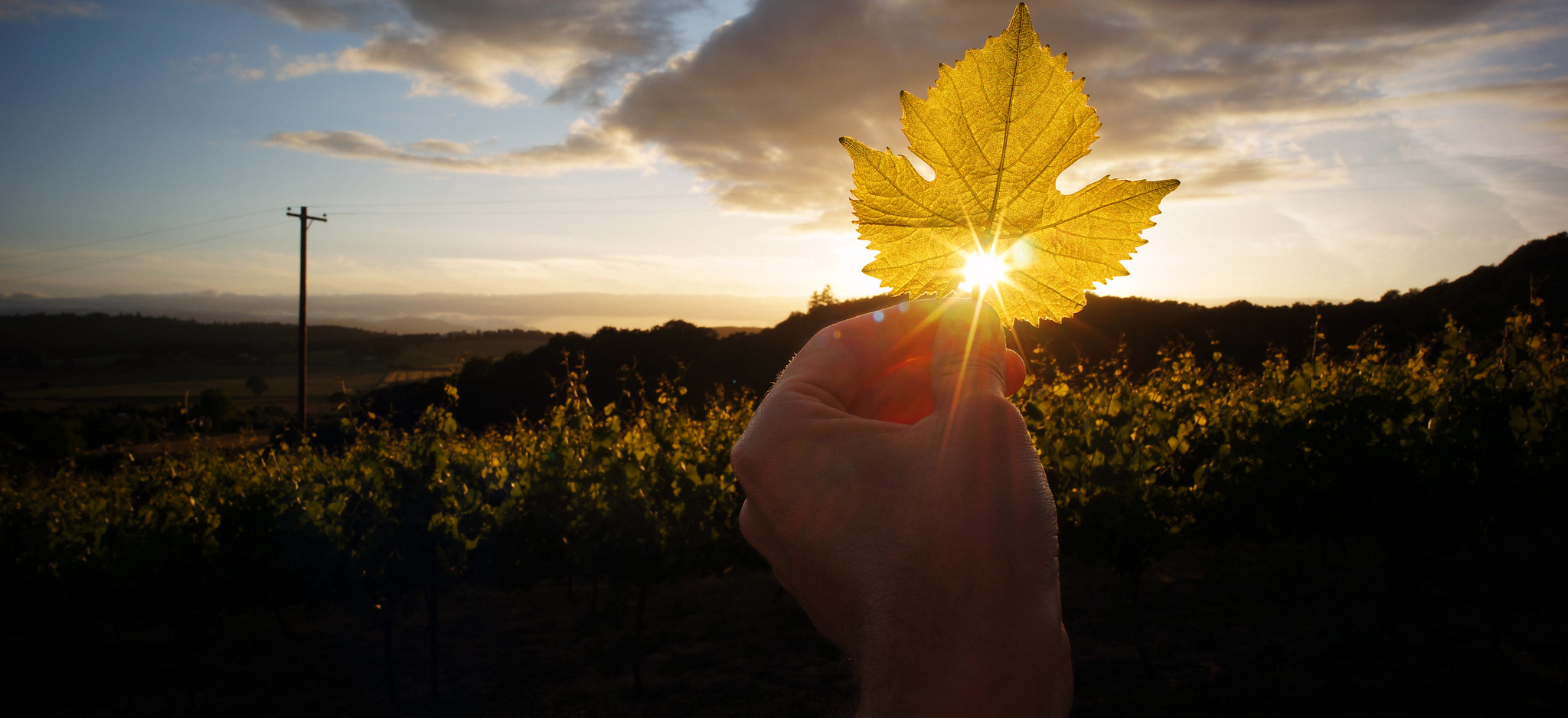 Region:
Region: -
Description:
Franchere Wine Company is an exciting project helmed by Mike Hinds. An Oregon native, Mike got his start working in wine shops in Chicago where he caught the wine bug from a bottle of Vouvray. This captivating experience led him to ask, “What is this? Why is this so magical with my food? How did this wine come to be like this?” The obsession was launched, and Mike returned to his home state taking viticulture classes, working in the cellar at Illahe Vineyards, farming grapes, and finally producing his own wines.
Launched with the 2013 vintage, Mike named his project Franchere after his great-great grandfather, Gabriel Franchère, who arrived in Oregon in 1811 aboard the ill-fated ship, Tonquin. In Gabriel’s memoir he gave his impression of what would later become Portland, describing the incredible landscape as having presented “…a smiling and enchanting prospect to the observer who loved the beauties of simple nature”. This regard for history, nature, and place runs through the wines of Franchere.
Mike Hinds hand-farms approximately 15% of the production, with the balance being sourced from vineyards in the Willamette Valley and Columbia Gorge that are farmed organically, biodynamically, or sustainably – in all cases without irrigation and systemic herbicides. In the cellar he utilizes native fermentations, neutral aging vessels, and no adjustments. The resulting wines are fresh, savory, and balanced, while always showing their Willamette Valley origins.
Image: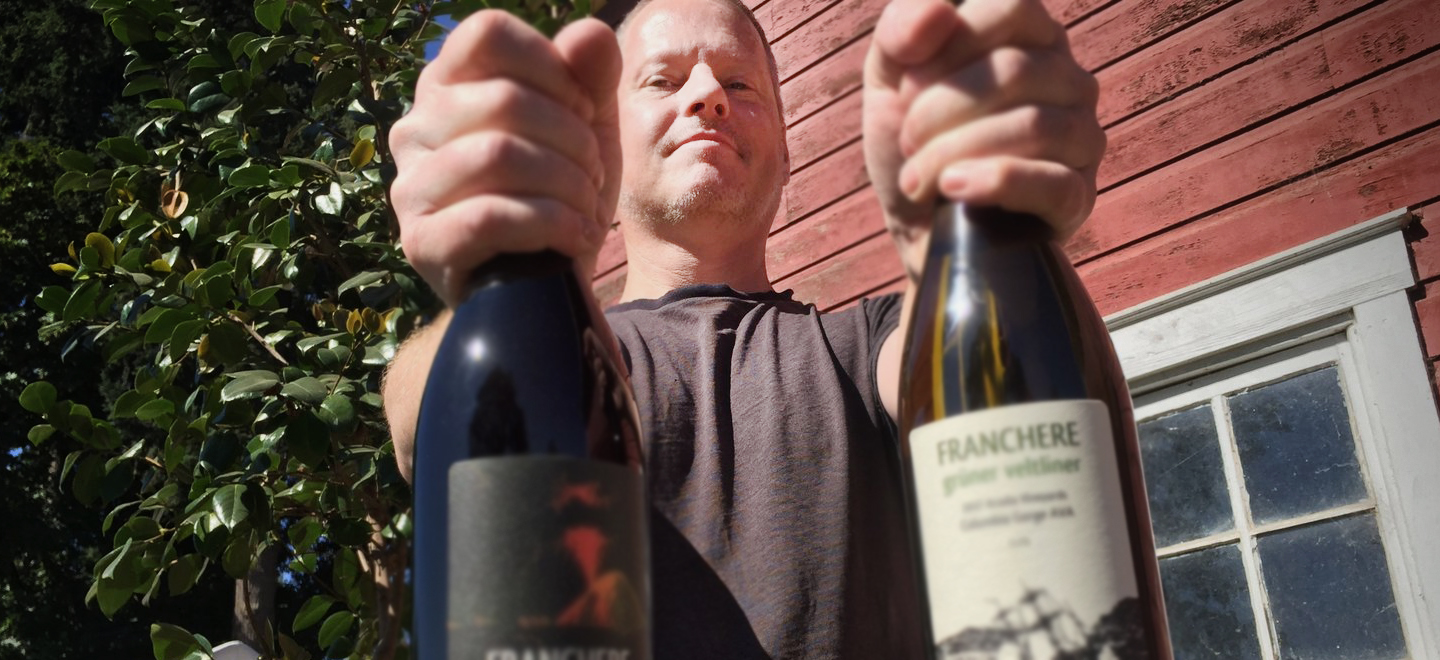 Region:
Region: -
Description:
Thank you to importer Louis/Dressner for this Boulard profile:
(Click here for Louis/Dressner's additional notes on Boulard)
Delphine Boulard is the seventh generation to work her family's land in Champagne and now fully at the helm of the estate she founded with her father Francis in 2009. Prior to founding Francis Boulard et Fille with Delphine, Francis worked alongside his brother and sister running the now defunct family estate Raymond Boulard. The winery created a reputation for itself by highlighting the distinct terroirs of the three areas it worked: the rich clay soils of the Marne planted in Pinot Meunier, Chardonnay from the silica-limestone soils of the Massif de Saint-Thierry and the Pinot Noir of Mailly (the two latter being subsections of the Montagne de Reims). During his tenure there, Francis was the head viticulturist and winemaker. But a fundamental disagreement would lead him to leave it all behind and start his own much smaller estate.
Francis' career as a vigneron dates back to the early 70's, a period where chemical viticulture was only starting to gain traction. Like most in his generation, he began adopting chemical fertilizers, pesticides and herbicides in his vineyard work. But around 1996, he was faced with a daunting realization.
"As a simple peasant, I always assumed that the products we were putting on our vines would wash away after a couple of rains, that they would naturally go away. No one ever told us that chemical residue would not only permanently affect the vineyard, but actually end up in the wine."
Francis knew something had to change but wasn't entirely sure what to do. Around this time, a friendly mention of biodynamics by a colleague would introduce him to Rudolph Steiner's philosophies and lead to several years of viticultural experimentation. Determined to attempt this type of viticulture on his land, Francis convinced his siblings to convert one hectare, at first to see if it was possible to have healthy vines without using chemicals. This proved a success, so Francis tried something else: intentionally working part of a parcel biodynamically, leaving the rest in conventional chemical viticulture and vinifying both separately. Three years in a row, he felt the wine from biodynamic grapes was more expressive.
Convinced that the entire estate could and should be converted, Francis proposed this to his brother and sister. His idea was met with heavy resistance and ridicule. After much reflection, he decided that he could work no other way: Francis claimed his three hectares of vines, broke off from his family and started his own estate. His daughter Delphine, who had been working alongside her father at Raymond Boulard for nine years, decided to follow him and together they founded Francis Boulard et Fille in 2009. They work close to three hectares in the Vallée de la Marne and the Montagne de Reims following organic and biodynamic practices. The breakdown of land is essentially a third of what Raymond Boulard used to be in size, with the three distinct terroirs still expressed through a smaller, more artisanal lens: 1.6 hectares are in the Massif Saint-Thierry, 0.5h in Mailly (both sectors of the Montagne de Reims) and the 1.2h of historic family parcels in the Vallée de la Marne.
Delphine originally had no intention of becoming a vigneronne and had gone to university for interior design. After a few years designing kitchens and bathrooms for large French corporations, she was bored to death and asked me Francis if she could come work at Raymond Boulard. Her first year she studied viticulture, then she followed a professional oenological program and her third year she studied administration and business. During her studies, she was working in the vines every day.
The estate is certified organic and worked with biodynamic preparations, a rarity in Champagne. So much so that large signs had to be installed in the vineyards so that helicopters can see which plots to avoid while dumping chemical products on the vineyards. It may be hard to believe, but this is a common practice in Champagne; a law passed in the early 2010's forbidding helicopter treatments within 120 meters of organic vineyards! Another poignant example: of the 400 hectares planted in the Vallée de la Marne, only 3.2 are certified organic. The Boulard own 1.2 hectares of that land.
Unlike most Champagne houses, grapes are picked at an optimal ripeness. This produces vins clairs closer to "normal" dry wine (12, 13%), making for Champagnes that are quite vinous. In such, dosage is decided judiciously in measure of each release, though the trend has been less and less or no dosage whatsoever.
After almost 50 years in the vines, Francis retired in 2017. A dramatic electrical fire in the Boulard cellar in late 2016, coupled with Francis' retirement led Delphine to build a new edifice alongside her new house. The only major stylistic shift is that Delphine now vinifies and ages everything in old Burgundian barrels and a few foudres (Francis had favored demi-muids along with barrels of all sizes).
Photos ©Boulard & Fille
Image: Region:
Region: -
Description:
For more information on Frantz Saumon, please visit Selection Massale.
Available in California.
Image: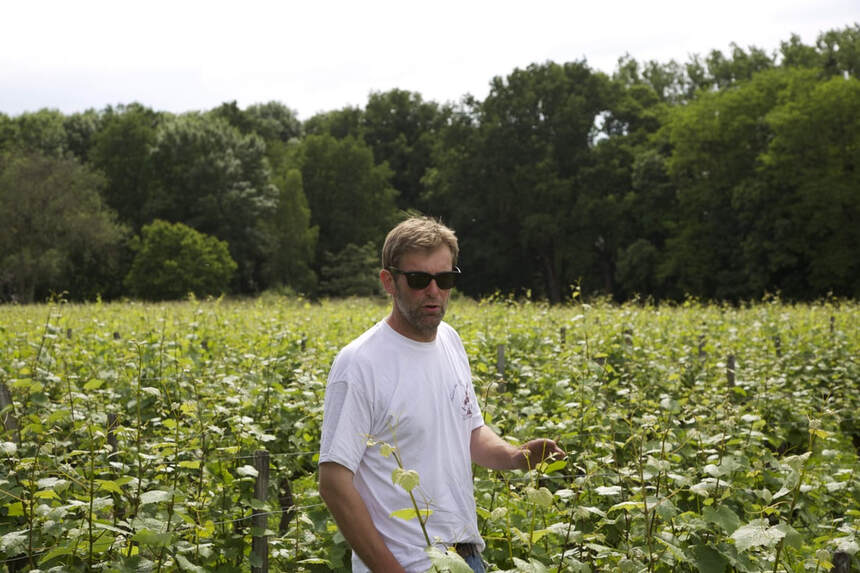 Region:
Region: -
Description:
Fratelli Alessandria is a historic and beloved winery in the village of Verduno. The estate, initially known as Fratelli Dabbene, traces its first commercial wine release back to 1830. From 1870 on, after a marriage, it has been called Fratelli Alessandria.
Verduno has always played an important role in wine production, contributing to what we think of and love as Barolo today. Barolo had been a rustic, semi-sweet wine that did not keep or travel well. The House of Savoy, eventually Italy’s monarchy, owned Castello di Verduno and chose G.B. Burlotto as its official wine supplier. They installed their royal enologist, General Paolo Francesco Staglieno, who—by improving sanitary conditions, keeping barrels covered and topped up, and insisting on long aging—helped transform Barolo into a dry wine, the “wine of Kings.”
Fratelli Alessandria was an active participant in these developments. An article from November 2, 1843, in the Gazzetta Ufficiale of the Associazione Agraria, an initiative of King Carlo Alberto, reports the two golden medals that the winery was awarded. First, “for the improvement in winemaking…and for the successful expeditions of their wines overseas.” The second one, obtained along with Count Camillo Benso Cavour (who would also become Italy’s first prime minister), reads: “for the best kept winery.”
Today, Gian Battista Alessandria, his wife Flavia, his brother Alessandro, and his son, Vittore, are the 7th and 8th generation of vignaioli at Fratelli Alessandria. They own 13ha of vines in Verduno and 2ha in Monforte d’Alba (in the cru of Gramolere). They have 3ha of undeveloped woodlands.
Verduno, though accounting for only 5% of production in the Barolo zone, has started to reclaim its historical stature, for good reason. Its vineyards are open and luminous. Its proximity to the Tanaro river has a mitigating effect, creating a steadier climate compared to other villages. The soils, while from the geological formation of the Laminated Marne di Sant’Agata Fossili, are particularly rich in manganese and magnesium, blue-grey to the naked eye, sparking elegant wines with a floral spiciness that is the village’s signature. The cru of Monvigliero, Verduno’s most important, and its only cru that faces due south, undoubtedly has world-class personality and a track record for aging. Lastly, any discussion of Verduno would be incomplete without the mention of Pelaverga Piccolo, a grape variety which is exclusive to the village and makes semi-aromatic, peppery, light-colored wines that drive Piedmontese wine lovers crazy!
Fratelli Alessandria has been impervious to many of the fads that have swept the Barolo zone over the last couple decades. They’ve preferred to nurture Verduno’s uniqueness through organic farming (uncertified for now), native fermentations with temperature control, and, for the Barolos, long aging in large cask. This humble family and their wines have a clean, confident classicism that make them an undersung, but benchmark, producer.
Image: Region:
Region: -
Description:
Julien Frémont is the latest generation of his family to carry on raising apples and cows on the farm which they founded in the Pays d’Auge region of Normandy in 1759. Ever since, the Frémont family has pressed cider and distilled Calvados, while keeping cows that helps mow and fertilize the grass and eat fallen apples in their orchards (bear in mind too that this is the homeland of Livarot and Camembert cheeses). Broadly speaking, Julien has carried on the Frémont family traditions. There are 45 hectares of land, 12 of which are planted to apple trees, the rest being used mainly for grazing. The trees are all heirloom cider apple varieties, some of them quite old; the orchards have been perpetuated by massal selection over the centuries. The hand-harvested fruit is pressed in the original 18th-century wooden press, the juice then being naturally fermented and bottled before finishing, to become a naturally sparkling, dry cider. Some of that cider is then turned into Calvados in their ancient pot stills.
The whole operation as described above is quite straightforward, as well as true to regional and familial tradition—but since he took over 20 years ago, Julien has gradually diverged from some of the more conventional aspects of his family’s operation and of the regulations of the Pays d’Auge appellation. Working harvest with the legendary Beaujolais vigneron Foillard was a turning point in his approach in both the orchard and the cidery. Julien tends Frémont’s trees purely organically and biodynamically, a true rarity in Normandy, with assistance from the resident herd. The trees grow in a range of flinty clay soils, and Julien very much works the orchard and makes cider with terroir in mind: at least two bottlings are soil-specific ones (“Silex” and “Argile”), which is also highly unusual if not unique in the Pays d’Auge.
Besides thinking like a vigneron in the orchard, Julien does so in the cidery as well. Some things have not changed: the fruit is harvested by hand in many different passes and carried up into the loft of the cidery in a home-rigged pulley system of small buckets. They are crushed in the ancient press with the juice going into huge 2000-liter, 100-year-old, open wooden vats. But for most of its 20th century production, the Frémont farm like most others were visited by a traveling oenologist, who would issue advice on how much of this or that—yeasts, enzymes, sulfur, sugar—to add and when. Julien dropped the outside consultants and forged a new path for Frémont. Fermentation takes places with indigenous yeasts only and with zero sulfur—which is not added at any stage in the cider’s life—or any other additives. This hands-off approach is extraordinarily rare in Norman cider production.
Julien did not stop there. Frémont ciders have always been bottle-conditioned, in other words finishing their fermentation in the bottle. But the ciders always finished with or were dosed to finish at a demi-sec sweetness level, which is required for the famous Pays d’Auge AOC classification. Julien came to feel that the best expression of Frémont terroir and apples was with no manipulation and no sugar to distract from the fine bones of the cider. Continuing the natural fermentation to the point of dryness or near-dryness in the bottle meant also not continuing with the Pays d’Auge designation. That was never a deal-maker or -breaker for Julien: the Frémont production is quite small and became the darling of not only natural-leaning vignerons but also the Parisian restaurant world and beyond. The ciders are dry, robustly flavored, complex, and dripping with pure, earthy apple flavor, occasionally with a gently oxidative aspect.
The preceding explanation of Frémont’s cider production might seem excessive, given that Bowler does not distribute the ciders (Louis/Dressner does import and sell them directly), but they are the heart and soul of the single estate Calvados. The biodynamically farmed, naturally fermented, unsulfured, dry cider is transformed in small batches in their old pot stills into a sublime spirit. The Calvados is aged in wood and bottle for 5-6 years before release. You will not find the vintage or distillation date on the label (just as you will not find “reserve” on the label, as you will on the very same Calvados in France).
Image: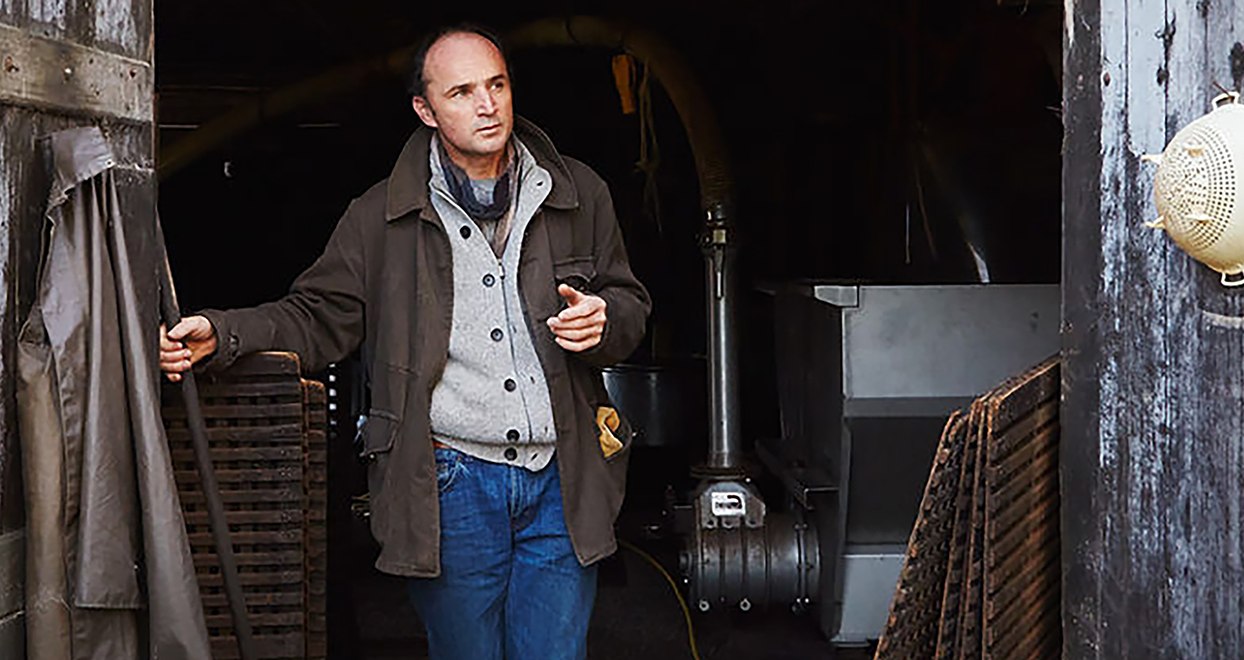 Region:
Region: -
Description:
Aaron & Cara Mockrish ended up in North Yuba County with the intention of establishing a farm, but a bottle of Clos Saron Black Pearl 2008 sent them off on an unexpected path to winemaking. Having tasted the wine, they found that the man who made it lived near to their farm. It was there, in Oregon House, California, that they found Gideon Beinstock, his tiny home vineyard, and their future.
They began learning from Gideon, working in the vineyards to the winery and everything in between, and it was clear that not only was this the life for them, that this was a singular place and the wines were unlike anything else. Shortly after producing their first vintage in 2015, they were able to secure access to a large portion of the Renaissance Vineyards, where they have been carefully farming multiple blocks of old, own-rooted, and dry farmed vines. In addition to their work at the Renaissance Vineyard, Aaron and Cara are establishing new vines on the steep, rocky slopes of their home vineyard, as well as tending to a 12-acre plot of mixed varieties in Grass Valley.
The hard work in the vineyard and cellar are clear when you taste the wines of Frenchtown Farms. They are part of a tradition while carving out a singular voice of their own.
Image: Region:
Region: -
Description:
The brothers Ramirez, Pedro and Antonio, have been running Fronton de Oro since the early 2000’s. Their estate on the hills of La Lechuza, a small town on the island of Gran Canaria, was created by their dad in the 1970’s. D. Antonio Ramirez at first envisioned a whole farm on the land, and he planted vegetables as well as vines. Today the brothers mainly focus on cultivating the local varietals, Listan Negro, Listen Prieto, Negramoll, Maramajuelo, and Tintilla (also know as Trousseau), all in very poor volcanic/clay soils. Their vineyards are planted on some of the highest-elevation sites in Gran Canaria - many above 3,000 feet - and in many cases on terraced slopes, although some are cultivated wildly and untrained. The name of the estate “Fronton de Oro” refers to a huge rock that shines with sunlight (the one that adorns their label) known locally as “El Frontón”. Their entry-level wine, Fronton de Oro Tinto, is one of the most easily recognizable wines from the Canary Islands, while the Tintilla is an outstanding example of what their terroir can produce.
Image: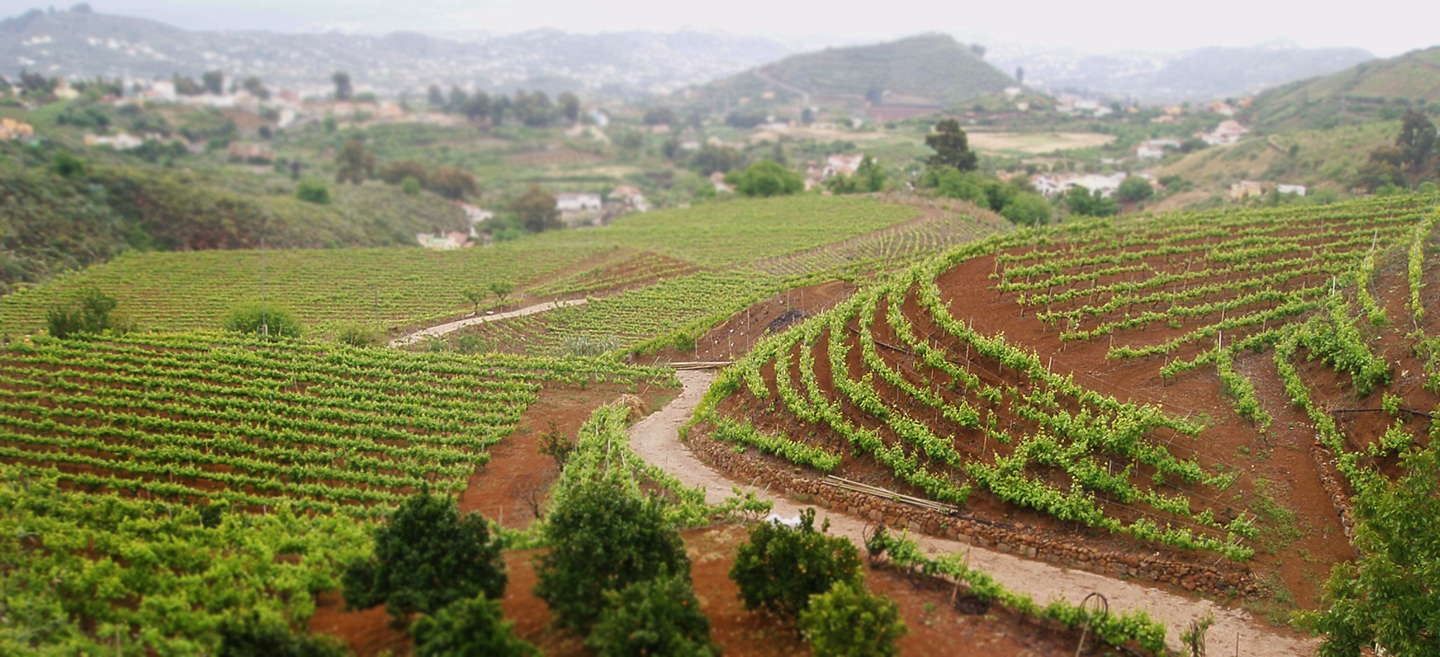 Region:
Region:
